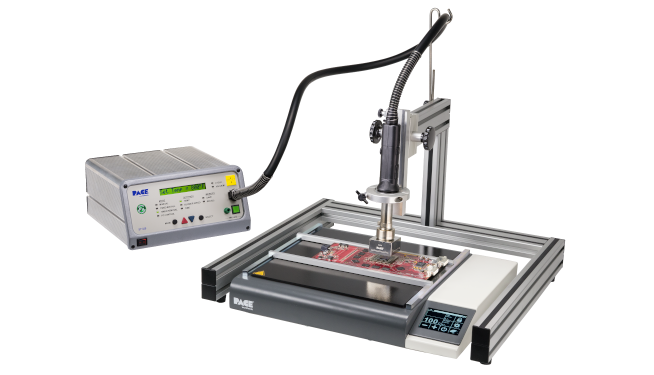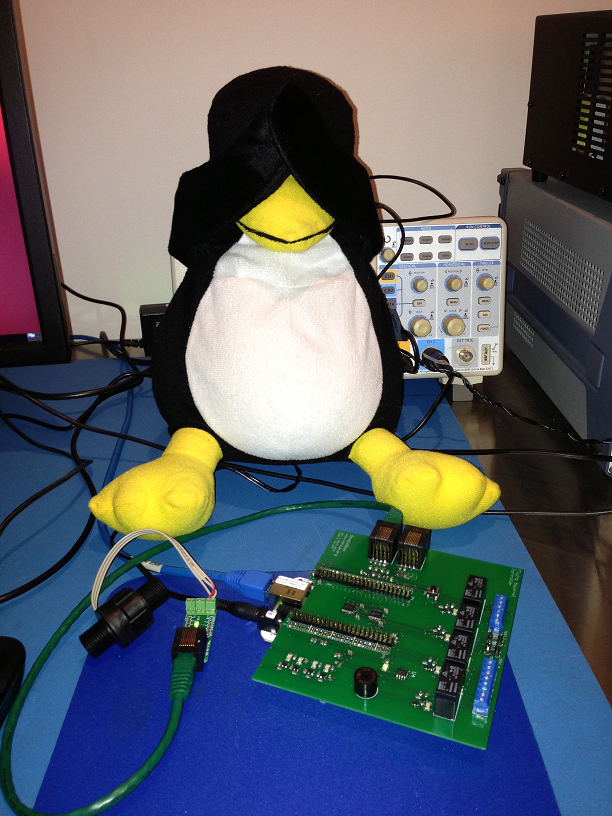The best solder for electronics has rosin core and is 60% tin, 40% lead. N It gets There are other types, for instance lead-free solder, but it has toxic chemicals in its core, and it is not quite as easy to use as solder with lead. It also corrodes soldering iron tips quickly. If you can only get lead-free. A 25 or 30 Watt iron should suffice for most small electronics work. Most soldering 'guns' are vastly overpowered for electronics soldering and can easily overheat components or expose them to harmful voltages. However, some people cleverly use them to solder.
. What is the appropriate temperature for soldering? Joint area temperature = The M.P of solder alloy+4050 Degree C. Sn60% Solder (190Degree C) +4050 Degree C =230240 Degree C. However the iron will be set much hotter @350-450 ºC. The hotter the iron the faster the joint can be made providing the heat transfer from it is good.
| Amateur Radio | Amazon.com |Biology | Books | Chemistry | Data Sheets | Electronics | Math | Microscope | NASA-TV | |
Basic Soldering For Electronics Pace Handbook Of North American
ELECTRONICS COURSE OUTLINE (Print this Page.)Then go HERE.
This is the BEST basic electronics course on the internet. Why? Because it is organized so you can select your areas of interest and go directly to them. Most internet courses are disorganized and it is hard to find particular information and follow their train of thought. There is a lot of good information on the internet but finding it and organizing it takes a lot of time, skill and effort. We have done all that for you. Enjoy.Whatever your interest or current level of knowledge you can find valuable information here in our FREE electronics course. If you are a rank beginner or have a post doctorate in electrical engineering you can find informative material in our course. You are encouraged but not obligated to buy the books we suggest to supplement the free material. This is our only means of support.
FIRST: Look over the course table and quickly browse through all the links. This will give you a feel for where you should start depending on your current skill level and also an idea of where you can go with the course. Print out these pages and use it to track your progress by placing check marks in the 'Check Box' column labeled CK.

SECOND: Write down your objectives for the course in the space below. Answer the question, 'what do you want to learn from this course'. What is your purpose for spending your time on this course, and what do you want to do with the information? Then, organize and schedule your time.

| Your course objectives: | |
| Your Notes: : | |
| Study Guide & Test: | Bell South Electronics Study Guide and Testhttp://www.asisvcs.com/publications/pdf/710041.pdf |
Handling: Most modern electronics systems contain static-sensitive de-vices. Use proper handling procedures to minimize the likelihood of damage: grounding wrist-straps, grounded soldering irons, grounding mats, etc. 1.3 Precautions Soldering Irons get very hot (600-8000F, 315-4250C), please ensure you fol-low precautions during use. Printed Circuits Handbook. Download Full PDF Package. A short summary of this paper. 33 Full PDFs related to this paper.
COURSE TABLE
Basic Soldering For Electronics Pace Handbook Of North Carolina
Phase I: Electricity | Phase V: Advanced | ||
| Introduction (1) | Amateur Radio | ||
Basic Electricity(2) | Antennas & Wavelength | Power Supplies-Ckts | |
| Books - Basic Electronics | Radio Astronomy | ||
Phase II: Components: | Books - More Books | Ref. I - Engineering | |
Basic Electronics(3) | Books - Top 10 | Ref. II - Electronics | |
| Resistors & Circuits (4) | Calculations/Conversions | Resonant Circuits | |
| Ohms Law (5) | Calculators for Electronics | RF Design | |
| Capacitors and Circuits(6) | Circuit Design - SPICE | RF Cafe | |
| Inductors(7) | Circuits and Science | Robots | |
| Data Sheets | Schematics-Projects | ||
Phase III: Workshop | DSP - Design - Tutorial | Simulation | |
| Math for Electronics (8) | Electronics Links | Smith Charts | |
| Shop Practices(9) | Engineer on a Disk | SAS | |
Test Equipment (10) | FCC | Software - Electronics | |
Soldering - How to(11) | Ferrite Cores | Software - Engineering | |
| Filters | Standards & Formulas | ||
Phase IV: Active Ckts. | Fourier Transform | Substituting-Transistors | |
| Transistors/LED's(12) | Formulas - EE | Technical Links | |
| Integrated Circuits(13) | HF Transformer Design | Television | |
| Digital Electronics(14) | Lasers | Toroids I | |
| TTL Logic (15) | MathCAD-Electronics | Toroids II - Calculating | |
| Eddy Currents (16) | NEWS-Industry | Transistors/LED's | |
| PCB Design | Tutorials - Free Online |
THIRD:Book recommendations and suggestions to accompany this course are:
ELECTRICITY - Schaum's Easy Outline of Basic Electricity or Navy Basic Electricity
BASIC ELECTRONICS
Basic Electronics by Grob, | |
Math for Electronics by Grob, | Art of Electronics by Horowitz, |
Art of Electronics - Student Manual by Horowitz, | |
Electronic Principles by Malvino, | Electronics ScrapBook by Forrest Mims, |
Experiments Manual by Malvino, | Engineers Notebook by Forrest Mims, |
Workbook by Malvino, |


TECHNICIAN
EDN's Analog Circuit Design, |
| The Circuit Designer's Companion A must have book! |
Basic Soldering For Electronics Pace Handbook Of North Texas
ENGINEERING - Electrical Engineering Handbook by Dorf
This page can be found at: http://www.101science.com/basicelectronics.htm
Basic Soldering For Electronics Pace Handbook Of North American
Amazon.com Widgets